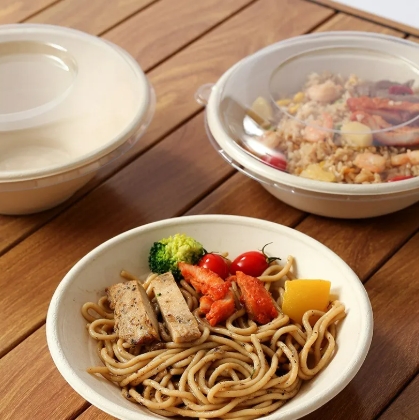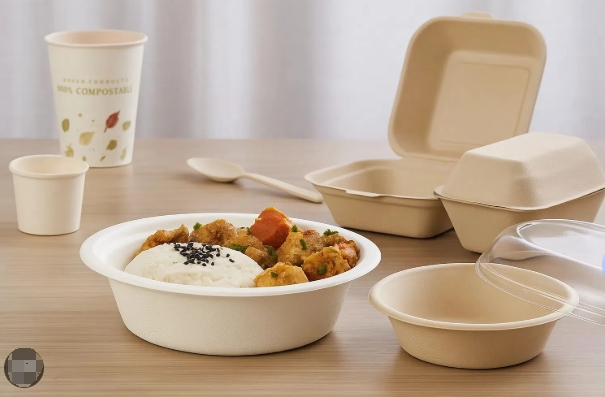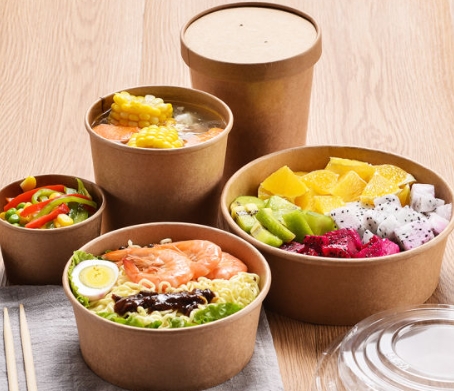
Content Menu
● The Strategic Importance of Bowl and Lid Suppliers
>> Enhancing Brand Value
>> Ensuring Food Safety and Quality
>> Supporting Operational Efficiency
● Key Criteria for Selecting Bowl and Lid Suppliers
>> Product Quality and Material Selection
>> Sustainability and Environmental Responsibility
>> Customization and Branding Capabilities
>> Production Capacity and Reliability
>> Compliance and Certifications
>> Pricing and Cost Structure
>> Logistics and Delivery Performance
>> Customer Service and Communication
● The Supplier Evaluation Process
>> Needs Assessment
>> Supplier Research and Shortlisting
>> Request for Proposal (RFP) and Sample Testing
>> Site Visits and Audits
>> Negotiation and Contracting
>> Ongoing Performance Monitoring
● Case Studies: Industry Best Practices
>> Global Fast Food Chain
>> Premium Meal Delivery Service
>> Institutional Foodservice Provider
● Trends Shaping Supplier Selection
>> Rise of Sustainable Packaging
>> Digitalization and Supply Chain Transparency
>> Customization and Personalization
>> Globalization and Local Sourcing
● Challenges and Solutions in Supplier Selection
>> Balancing Cost and Quality
>> Ensuring Supply Chain Resilience
>> Keeping Up with Regulatory Changes
● Conclusion
● Frequently Asked Questions (FAQ)
>> 1. What are the most important factors when choosing a bowl and lid supplier?
>> 2. How do companies ensure the safety of their packaging suppliers?
>> 3. Why is sustainability a key consideration in supplier selection?
>> 4. How do foodservice companies handle supply chain disruptions with packaging suppliers?
>> 5. Can small foodservice businesses use the same supplier selection strategies as large companies?
In the ever-evolving landscape of foodservice, the role of packaging has become more vital than ever. Bowls and lids are not just containers; they are an extension of a brand's promise, a safeguard for food quality, and a crucial element in customer satisfaction. For leading foodservice companies, selecting the right bowl and lid suppliers is a strategic decision that can influence operational efficiency, sustainability, and even the bottom line. This comprehensive guide delves into the nuanced process through which top foodservice organizations identify, evaluate, and partner with their bowl and lid suppliers, offering insights into industry best practices and emerging trends.

The Strategic Importance of Bowl and Lid Suppliers
Enhancing Brand Value
Packaging is often the first physical interaction a customer has with a foodservice brand. The design, material, and overall quality of bowls and lids contribute directly to how the brand is perceived. Leading companies recognize that packaging can reinforce a premium, eco-friendly, or innovative image, and they seek suppliers who can deliver solutions that align with their desired brand identity.
Ensuring Food Safety and Quality
Food safety is non-negotiable in the foodservice sector. Bowls and lids must protect contents from contamination, preserve temperature, and prevent leaks or spills during handling and transportation. Suppliers must demonstrate a strong commitment to food safety, adhering to industry standards and providing assurance that their products are suitable for direct contact with various types of food.
Supporting Operational Efficiency
Efficient packaging streamlines processes from kitchen prep to delivery. Features such as stackability, easy sealing, and leak resistance help staff work more effectively and reduce the risk of errors. Leading companies look for suppliers who understand these operational needs and offer practical, user-friendly solutions that integrate seamlessly into their workflows.
Key Criteria for Selecting Bowl and Lid Suppliers
Product Quality and Material Selection
At the core of supplier selection is the quality of the product. Foodservice companies rigorously assess potential suppliers based on the durability, appearance, and functionality of their bowls and lids. Important considerations include:
- Material suitability: Options range from plastics and paperboard to compostable and biodegradable materials. The choice depends on intended use—whether for hot or cold foods, microwave or freezer compatibility, and the company's sustainability goals.
- Leak and crack resistance: Essential for items like soups, sauces, and takeout dishes.
- Visual appeal: Clear lids or well-designed bowls can enhance the customer's dining experience and support brand presentation.
Sustainability and Environmental Responsibility
Sustainability has become a core expectation. Companies increasingly evaluate suppliers based on their commitment to:
- Using renewable or recycled materials
- Offering compostable or recyclable products
- Implementing eco-friendly manufacturing practices
- Supporting broader corporate sustainability initiatives
Customization and Branding Capabilities
Custom-branded packaging helps reinforce brand identity and create a memorable customer experience. Leading suppliers provide:
- Custom printing and labeling options
- Unique shapes, sizes, and finishes
- Collaborative design services to bring brand visions to life
Production Capacity and Reliability
Scalability is crucial for foodservice operations that may face seasonal spikes or rapid growth. Companies assess suppliers on:
- Manufacturing capacity and ability to meet volume demands
- Consistency of supply and inventory management systems
- Flexibility to accommodate urgent or large orders
Compliance and Certifications
Food safety certifications and robust quality management systems are strong indicators of a supplier's reliability. Companies look for:
- Adherence to local and international food safety standards
- Third-party certifications that validate food safety and quality
- Transparent quality control processes
Pricing and Cost Structure
While price is always a consideration, it is weighed alongside quality, reliability, and service. Companies analyze:
- Unit costs and minimum order requirements
- Total cost of ownership, including shipping and storage
- Value-added services such as bundled purchasing or volume discounts
Logistics and Delivery Performance
Timely and reliable delivery is essential for uninterrupted operations. Companies evaluate suppliers based on:
- Proximity to distribution centers or outlets
- Delivery schedules and track record of reliability
- Ability to provide just-in-time inventory solutions
Customer Service and Communication
Strong supplier relationships are built on clear, responsive communication. Companies value suppliers who:
- Offer dedicated account management
- Respond quickly to inquiries and resolve issues efficiently
- Provide proactive updates on orders, product changes, or potential disruptions
The Supplier Evaluation Process
Needs Assessment
The process begins with a thorough assessment of requirements. Companies consider the types of food they serve, portion sizes, sustainability objectives, and any operational constraints that may influence packaging needs.
Supplier Research and Shortlisting
Potential suppliers are identified through industry networks, trade shows, referrals, and online research. The initial shortlist is based on compatibility with the company's specific needs, such as material preferences, customization capabilities, and sustainability credentials.
Request for Proposal (RFP) and Sample Testing
Shortlisted suppliers are invited to submit proposals, often accompanied by product samples. These samples are rigorously tested for:
- Compatibility with menu items
- Durability under various conditions
- Visual appeal and alignment with branding
Site Visits and Audits
For key suppliers, companies may conduct site visits to evaluate manufacturing practices, quality control systems, and sustainability initiatives. This hands-on approach helps verify that the supplier's operations meet the company's standards.
Negotiation and Contracting
Negotiations cover pricing, delivery terms, quality guarantees, and service levels. Contracts are structured to include performance metrics, review periods, and clear expectations for both parties.
Ongoing Performance Monitoring
Supplier performance is continuously monitored based on product quality, delivery reliability, and responsiveness to issues. Regular feedback ensures continuous improvement and alignment with evolving business needs.

Case Studies: Industry Best Practices
Global Fast Food Chain
A well-known global fast food brand emphasizes sustainability and brand consistency. Its supplier selection process includes detailed sustainability audits, custom packaging design collaborations, and a dual-sourcing strategy to ensure supply chain resilience and flexibility.
Premium Meal Delivery Service
A high-end meal delivery company prioritizes packaging that preserves food freshness and supports a premium unboxing experience. The company works closely with suppliers to develop custom solutions, regularly testing new materials for performance and environmental impact.
Institutional Foodservice Provider
An institutional provider serving schools and hospitals focuses on safety and cost efficiency. Their selection process includes third-party safety certifications, bulk purchasing agreements, and robust contingency planning for potential supply disruptions.
Trends Shaping Supplier Selection
Rise of Sustainable Packaging
Eco-friendly materials and processes have become standard expectations. Companies seek suppliers who invest in biodegradable, compostable, or recyclable solutions and who demonstrate a proactive commitment to reducing environmental impact.
Digitalization and Supply Chain Transparency
Digital tools now enable real-time tracking of orders, quality metrics, and sustainability data. Leading suppliers provide online portals for easy ordering, tracking, and communication, enhancing transparency and efficiency.
Customization and Personalization
The demand for unique, branded packaging solutions is on the rise. Suppliers with advanced printing and design capabilities are increasingly sought after, as companies look to differentiate themselves in a crowded marketplace.
Globalization and Local Sourcing
While global suppliers offer scale and consistency, local suppliers can provide faster delivery and a lower carbon footprint. Many companies balance both approaches to optimize cost, speed, and sustainability.
Challenges and Solutions in Supplier Selection
Balancing Cost and Quality
Opting for the lowest-cost supplier can sometimes lead to issues with quality or service. Leading companies adopt a total cost of ownership approach, considering not just price but also reliability, product quality, and long-term value.
Ensuring Supply Chain Resilience
Disruptions such as raw material shortages or logistics delays can impact supply. Companies mitigate risk by diversifying their supplier base, maintaining safety stock, and developing robust contingency plans.
Keeping Up with Regulatory Changes
Packaging regulations are constantly evolving. Companies partner with suppliers who proactively monitor regulatory developments and adapt their products and processes to ensure ongoing compliance.
Conclusion
Choosing the right bowl and lid suppliers is a complex, strategic process that goes far beyond simple price comparisons. Leading foodservice companies take a holistic approach, evaluating potential partners on quality, sustainability, customization, reliability, and service. By establishing strong supplier relationships and continually monitoring performance, these organizations ensure that their packaging solutions support operational excellence, brand growth, and environmental responsibility.

Frequently Asked Questions (FAQ)
1. What are the most important factors when choosing a bowl and lid supplier?
Leading foodservice companies prioritize product quality, food safety, sustainability, customization options, reliable delivery, and strong customer service. They also consider the supplier's certifications and ability to scale with business needs.
2. How do companies ensure the safety of their packaging suppliers?
They require suppliers to adhere to strict food safety standards, obtain relevant certifications, and undergo regular audits. Many companies also test product samples and conduct site visits to verify compliance.
3. Why is sustainability a key consideration in supplier selection?
Sustainable packaging aligns with regulatory requirements, meets consumer expectations, and supports corporate social responsibility goals. Companies look for suppliers who use eco-friendly materials and practices.
4. How do foodservice companies handle supply chain disruptions with packaging suppliers?
They often diversify their supplier base, maintain safety stock, and develop contingency plans. Strong communication and clear contracts also help manage unexpected challenges.
5. Can small foodservice businesses use the same supplier selection strategies as large companies?
Yes, many of the same principles apply. Small businesses should focus on quality, reliability, and service, even if their order volumes are lower. Building strong relationships with suppliers can lead to better terms and support.

















